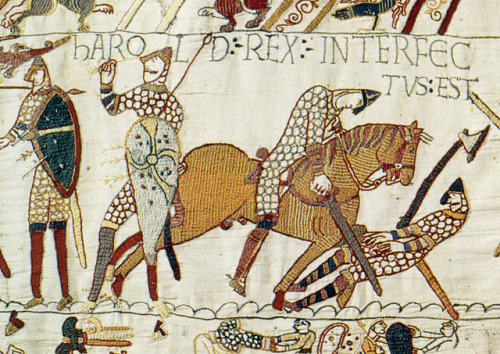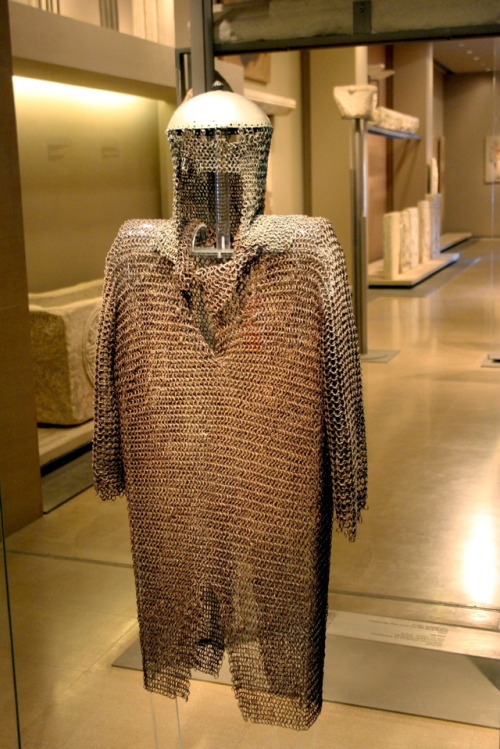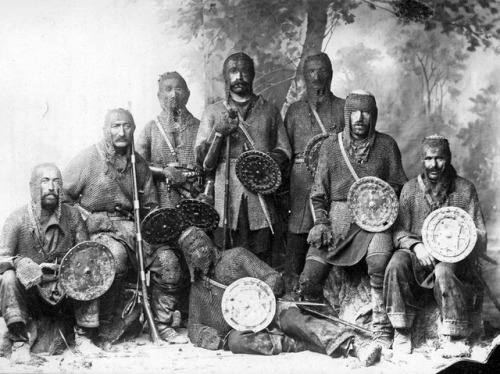petermorwood:peashooter85:Chainmail myths and the foibles of “historical testing”,Chainm
petermorwood:peashooter85:Chainmail myths and the foibles of “historical testing”,Chainmail armor is perhaps the most misunderstood type of armor in history, often viewed by people who don’t know much about ancient or medieval weapons as a low quality lesser form of armor. Unfortunately nothing could be further from the truth, and the reputation of chainmail has suffered as a result. Typically when one thinks of chainmail one thinks of Europe and the Middle Ages. In fact, chainmail has been used all over the world by many cultures and dates to ancient times, including civilizations such as the Ancient Celts (who possibly invented mail), Ancient Rome,Medieval Europe, the Middle East, North Africa, India, Southeast Asia, China, and Japan. Chainmail was even used by warriors in remote areas well into the 19th and early 20th century. Today chainmail is still in use, used by butchers and meatpackers to protect from accidental cuts, used in stab resistant vests employed by law enforcement, and even used by divers to protect against shark bites.There are many reasons why chainmail is looked down upon by modern peoples uneducated on the effectiveness of ancient or medieval armor. Contributors include movies and video games. One common source which I feel contributes the most to the chainmail myth is modern “historical testing” of chainmail armor, often on TV shows such as on the History Channel, Discovery Channel, or the many Youtube videos on the subject. Typically what occurs in this testing is that a so called historian or expert will test a piece of replica chainmail against replica weapons. To the amazement of the viewer, the mail is sliced to smithereens with a sword, skewered like a kabob with spears, and pierced to death with arrows. To the uneducated viewer, it would seem that chainmail was a completely useless type of armor, and even the most reputable of sources makes similar claims, that chainmail was deficient and was not effective for protection. I can think of no better example than this clip from a History Channel show, the testing of which begins around 2:50.There is a problem with the idea that chainmail was ineffective, and even basic reasoning and logic should expose that problem. After all, if chainmail was so ineffective, why did anyone bother to wear it into combat? Why did knights, nobles, and soldiers spend fortunes on chainmail when it was almost useless? Why would cultures across the world spanning thousands of years bother using it if it didn’t do its job of offering bodily protection?The truth of the matter is that in reality, chainmail was exceedingly effective for its purpose, and in the cultures that it was used, in the time periods it was used, it was often among the best if not the very best option available. A warrior who went into battle wearing mail had a much greater advantage over opponents with lesser armor or no armor at all. So why do these “historical tests” often show it as being ineffective? First, it must be known that there are two basic types of historical chainmail, butted and riveted. There is a third type, welded mail, but this is mostly a modern creation that wasn’t used in history. Butted chainmail is a constructed out of wire bent into rings with the ends touching. The wire ends are abutting hence the name “butted” mail. There’s nothing fastening the two ends together, thus butted mail tends to be very weak and easy to damage.The other common type is riveted chainmail. Riveted mail consists of metal rings that are fastened together with a metal pin or rivet. As a result, riveted mail is much stronger than butted mail, in fact it’s typically 10 to 15 times stronger. Generally speaking riveted mail also tends to have a denser weave using better quality materials.Butted chainmail really only has one purpose; as costume armor. It is not meant to be used as real protective armor, and there are only a few examples throughout history of butted mail being used in combat. Soldiers, knights, and warriors throughout history almost always used riveted mail due to its strength. I cannot stress this point enough, butted mail is not real armor. It is cheap costume armor produced for collecting, LARPing, cosplay, trick or treating, or perhaps ceremonial purposes. It is not made to protect someone in combat. I should also note that in combat a suit of mail was typically not worn alone, but often worn with a padded jacket such as a gambeson. This not only added extra protection, but prevented chaffing and discomfort.So in historical tests performed on TV or Youtube, what type of armor is most typically used? Well, whether its ignorance or because the producer bought a cheap piece of armor in order to save a few bucks, more likely than not butted mail will be used. Thus why such experiments often have terrible results.Unfortunately there are few tests using actual chainmail armor with riveted links. However those few that do exist have a totally different story to tell and show just how effective chainmail really is.In this video a person actually wears a suit of riveted mail while his friend stabs him with a knife.I would suggest checking out some youtube channels such as skallagrim, the metatron, scholagladiatora, ThegnThrand, knyghterrynt, and shadiversity. They do a good job dispelling the many myths about ancient and medieval weapons and armor, as well as giving loads of quality historical information.Anotherfactor about TV “historical tests” is that the programme itself may have someagenda to service. Put simply,if the intent is to show that armour was useless, expect plate armour that’s cheap, shoddy costume tinware which would shame a theme restaurant, and butted mailas easy to pry apart as a keyring, usually propped on a fencepost or mannequinwith no effort to simulate realism. However, ifthe intent is to show that armour was effective, expect the best reproduction mail and plate which the show budget can afford (and quite possibly, weaker than realistic weapons, especially bows. But then I’m cynical.)If the Royal Armouries are involved, that armour may benot just high-quality repro but actual real historical kit, and will be mounted on its target with all the necessary padding underneath. But then the Royal Armouries have a reputation as a source of scholarly reference to protect: TV shows like “Conquest” and far too many others do not. (Viewing tip: if the presenters shout a lot and behave like they’ve recently drunk several well-sugared espressos, often while marshalling a confused bunch of recruits who seem there just to hit things with other things, you are probably not watching a serious show.)Padding, or at least leather, was vital under mail because it was so flexible. Without padding, a blow that didn’t penetrate the mail would at the very least produce “only a flesh wound” as the mail-rings chewed up skin and muscle; at worst it would break bones and rupture organs. When non-flexible plate armour came into use, padding became less necessary and the gambeson or aketon became the arming doublet, with sections of mail to guard exposed places like armpits and elbows, but as much a foundation garment fitted with laces or straps to secure sections of plate as anything else. (I wonder about that diver in his clearly unpadded shark suit: sharks can generate considerable pressure with their bite, so while this is good against exploratory nibbles, what would happen to the limb inside the suit if pointed teeth crushed the mail rings down against it really hard…?)Something I’ve suggested before is that military padded garments were at least adequate armour in themselves- medieval gambesons and aketons worn under mail were often very solidly padded indeed, stuffed so tightly with tow, wool, horsehair etc. that they were almost rigid. There’s any amount of art from the Hundred Years War showing soldiers with metal on arms, legs and head but padded fabric on their bodies. The giveaway that this is indeed padded are the vertical lines that represent quilting - here, the jug-smasher in green on the right, and the man in red leaning on the barrel far left. The only visible mail here is the “camail” or “aventail” (mail curtain) attached to some of the bascinets.I’ve long felt that besides protecting the man inside, mail was also meant to protect this heavy padding from getting cut, ripped or otherwise unstuffed and made ineffective. However here the man in red is wearing padding over mail. You have to squint a bit, but the triangles at the hem of his aketon match the obvious mail at the edges of the plate “fauld” (metal hoop-skirt) worn by his companions. That suggests the mail was a final protection against anything getting through the padding, a principal behind modern body armour which combines ballistic fabric and trauma plates.These three sentences of @peashooter85 ‘s post are the core of the matter about whether mail had value or not:“After all, if chainmail was so ineffective, why did anyone bother to wear it into combat? Why did knights, nobles, and soldiers spend fortunes on chainmail when it was almost useless? Why would cultures across the world spanning thousands of years bother using it if it didn’t do its job of offering bodily protection?” Why indeed? BECAUSE IT WORKED. -- source link
Tumblr Blog : peashooter85.tumblr.com
#peashooter85#petermorwood#chainmail#armor#long posts#medieval combat#video#informative reblogs#youtube



